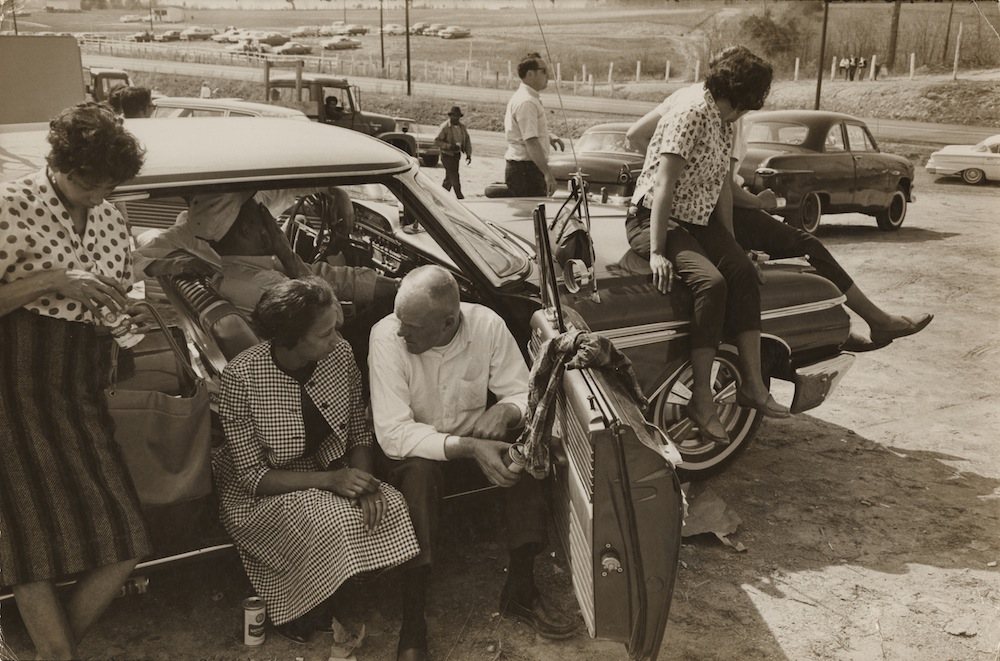![Grey Villet, [Mildred Loving greeting her husband Richard on their front porch, King and Queen County, Virginia], April 1965. © Estate of Grey Villet.](/files/news_20826_0.jpg)
Grey Villet, [Mildred Loving greeting her husband Richard on their front porch, King and Queen County, Virginia], April 1965. © Estate of Grey Villet.
ICP (International Center of Photography) 1133 Avenue of the Americas at 43rd Street New York États-Unis
The Loving Story: Photographs by Grey Villet, on view at the International Center of Photography (1133 Avenue of the Americas at 43rd Street) January 20 – May 6, 2012, presents a series of intimate photographs showing the love and unguarded emotions shared by Richard and Mildred Loving, a shy, nonpolitical married couple whose landmark United States Supreme Court case Loving v. Virginia overturned the country’s anti- miscegenation laws.
The exhibition, organized by Assistant Curator of Collections Erin Barnett, includes some twenty vintage prints by Grey Villet drawn from Villet’s estate and the Loving family. An HBO documentary The Loving Story, directed by veteran photo editor and filmmaker Nancy Buirski, inspired a stronger look at Villet’s legacy and his intimate images of the Lovings. In the film, his images become a narrative tool that underscores Villet’s personal approach to the couple’s story. The film debuts February 14, 2012.
The photographs focus not on the epic legal battle surrounding this groundbreaking Civil Rights case, but instead show the Lovings’s dedication to each other and their family, and their daily life in the Virginia countryside they cherished. On assignment for LIFE magazine in 1965, Villet traveled to Virginia to photograph Richard Loving, a white man, and his wife Mildred, a woman of African American and Native American descent. Both families had lived in Virginia for generations; even during the Jim Crow era, their town was known for friendly relations between the races and there were many mixed-race residents.

Grey Villet, [Richard and Mildred Loving sitting in open door of car celebrating Richard’s winning race, Sumerduck dragway, Sumerduck, Virginia], April 1965. © Estate of Grey Villet.
The Lovings married in 1958 in Washington, DC, but their interracial marriage was illegal in their home state. Found guilty of violating Virginia’s anti-miscegenation law and banished from their home, the Lovings enlisted the American Civil Liberties Union, which brought their case to the U.S. Supreme Court in 1966. The following year, the court unanimously declared Virginia’s Racial Integrity Act of 1924 unconstitutional and ended all race-based marriage bans in the U.S.
“Villet’s intimate access to the Lovings and his tender images show us a side of the couple and their three children the monumental case could not. In fighting for their right to life as husband and wife in their home state, the Lovings, who were not active in the Civil Rights movement, changed American culture and politics. As marriage equality gains support and the first mixed-race U.S. president finishes his first term, the case continues to have relevance,” said Barnett.
South African–born Villet (1927–2000) created some of LIFE magazine’s most poignant photo essays during his seventeen-year tenure. He and his wife, the writer Barbara Cummiskey Villet, collaborated on some of the finest in-depth stories ever to appear in the magazine, including The Lash of Success (1961), a look at one man’s journey to wealth and success, and a year-long investigation of the Levi Smith family of Vermont, which ran in fifty pages’ worth of installments (1966). The Villets also published two books: Those Whom God Chooses (New York: Viking Press, 1966) and Blood River (New York: Everest House, 1982).
This exhibition was made possible with public funds from the New York City Department of Cultural Affairs in partnership with the City Council.
Grey Villet, [Mildred Loving greeting her husband Richard on their front porch, King and Queen County, Virginia], April 1965. © Estate of Grey Villet.

